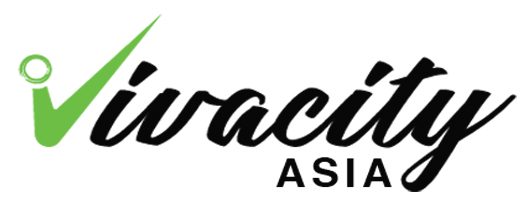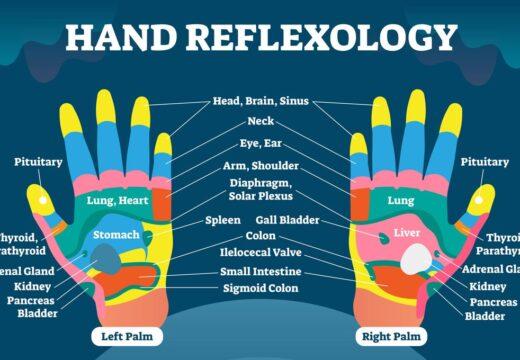History of Hand Reflexology
Hand reflexology—often explored today with the help of a hand reflexology map—is thought to have been first recorded as a pictograph on the Egyptian tomb of Ankhamor in 2330 BC, depicting pressure applied to the hands and feet along with other medical procedures. Later, references appeared on statues of Buddhas in India and China.
Practitioners of Traditional Chinese Medicine (TCM) have used hand reflexology since at least the early Zhou Dynasty of China. The oldest medical writings—Classic of Changes (Yi Jing) and Classic of Poetry (Shi Jing), dating back over 3,000 years—mention pressure techniques involving fingers and thumbs, as well as twisting and rubbing the hands together to promote healing and wellness.
What Is Hand Reflexology?
Hand reflexology is a massage therapy closely linked to the theories of acupuncture in TCM and other forms of Oriental medicine. It is based on the idea that the entire body is connected through nerves in the hands, as well as the feet and ears.
This simple treatment can help quickly alleviate various ailments by applying pressure to specific points on the hands. Practitioners believe the body contains energy channels that, when blocked, result in illness. By applying pressure to certain parts of the hands, these blockages can be released, restoring balance and wellness.
The Benefits of Reflexology on the Hands
Hand reflexology massage therapy offers many benefits. It connects the mind and body, reducing stress and promoting deep relaxation. It can also alleviate physical discomforts such as headaches, muscle pain, cerebral pains, and back or shoulder pain.
Hand reflexology has been shown to correct physical imbalances, reduce anxiety and fatigue, regulate blood flow, and relieve sinus issues. While the benefits of hand and foot reflexology are similar, you may need to apply slightly more pressure on the hand reflex points to achieve the same effects. Let’s take a closer look at how to read a hand reflexology map.
Hand Reflexology for Stress and Anxiety Relief
Stress and anxiety are among the most common reasons people seek hand reflexology. By stimulating key reflex points linked to the adrenal glands, solar plexus, and pituitary gland, hand reflexology can help regulate the body’s stress response and promote a sense of calm.
Recent research supports these benefits. A 2022 randomised controlled trial found that reflexology significantly reduced anxiety levels in patients undergoing cardiac procedures. Another 2023 pilot study reported improvements in sleep quality and decreased cortisol levels after regular hand reflexology sessions.
For a calming routine, gently massage the solar plexus point—located in the centre of the palm—for two minutes while practicing slow breathing. This may help lower heart rate and ease tension, making it an excellent self-care practice before bedtime or during stressful moments.
How to Read a Hand Reflexology Map

Reflexologists believe the human body is represented on the hands through a system of reflex points. By applying pressure to these points, nerve impulses may be sent to specific body areas, encouraging relaxation and circulation. While scientific evidence is limited, many people report relief from these techniques.
Different hand reflexology charts may show slightly different reflex points, which can confuse practitioners trained in a specific method. This variation stems from diverse traditions and evolving techniques. Additionally, individuals with reversed organ placement may have reflex points in different areas; in such cases, stimulating the general reflex zones can still benefit the body. The same principle applies to foot reflexology charts.
Key Reflex Points (Refer to a Hand Reflexology Map)
(1) Head, Brain, and Sinuses – Tops of Fingers and Thumb
The tip of each finger, including the thumb, represents the head, brain, and sinuses. The thumb also corresponds to the pituitary, pineal, and hypothalamus glands—helpful for insomnia and sleep issues.
(2) Neck – First and Second Knuckles
The sections between the top and bottom of your fingers correspond to the neck, while the base of the thumb corresponds to the throat.
(3) Eyes and Ears – Between the Second and Third Knuckles
The index and middle fingers represent the eyes, while the ring and little fingers represent the ears.
(4) Upper Chest, Lungs, and Upper Back – Upper Palm
Just below the knuckles on the palm side represents the upper chest, lungs, and upper back.
(5) Solar Plexus, Adrenal Glands, Kidneys, and Intestines – Mid-Palm
Located below the upper palm.
(6) Thyroid, Pancreas, Bladder, Uterus/Prostate – Outer Palm
From the base of the thumb down to the bottom of the palm on the thumb side.
(7) Arm & Shoulder, Hip & Thigh, Heart & Spleen, Liver & Gall Bladder – Inner Palm
Visualise a line from the pinky to the wrist.
(8) Testes/Ovaries and Sciatic Nerve – Wrist Area
Beneath the palm, near the wrist.
How to Do Reflexology on Your Hands at Home
Hand reflexology is a self-care massage you can perform at home to ease pain or improve circulation, especially for chronic conditions such as carpal tunnel syndrome or arthritis.
Steps:
(1) Relax both hands and locate the correct areas on a hand reflexology map.
(2) Place your thumb on the targeted zone and slide it back while flexing the thumb knuckle upward.
(3) Apply circular motions with firm pressure for up to one minute.
(4) Repeat on the other hand (except for single-hand organs like the heart or liver).
(5) Hydrate afterward with water or an electrolyte drink to aid circulation and flush lactic acid.
Is Hand Reflexology Effective?
Hand reflexology is considered an alternative therapy. While some Western doctors remain skeptical, many people report significant relief.
Though scientific evidence is limited, a 2020 clinical trial found that reflexology reduced anxiety and improved sleep in post-operative patients. As one of the most popular complementary therapies worldwide, hand reflexology continues to attract interest for its potential to support immunity, relaxation, and overall wellness.
For best results, consult a qualified reflexologist if you’re unsure how to perform the techniques.

